Everyone has their own cross, their own icons,
their own poetry, their own silence.
In front of the mirror, we often bow,
not noticing that in them all the same emptiness ..
Everyone has their own guardian angel and their own intercessor icon, which is given from birth.
Pray to your icon, ask the Lord through it for healing, and it will definitely come.
Each profession, each direction has its own unspoken heavenly patron. According to tradition, in ancient times, all believers had an icon of their saint at home. All icons are sacred.
A radiant light emanates from many of them, others streamed myrrh or fragrant.
Icons have repeatedly saved cities from fires, capture and destruction. There are countless icons in temples, and all of them are revered.
First of all, icons give people help - they heal, save from death, death.
All icons somehow manifest miracles, with their help we gain peace and strength.
For each person the word "faith" means something different.
Someone goes to church and prays, someone just believes in their hearts and believes that going to church every week is not at all necessary.
And everyone is right in their own way.
After all, faith is in our soul, in our heart. Almost every believer has Orthodox icons in their home, and if someone does not, then these people go to church and pray there. Although an icon is not at all necessary for prayer. Icons play a huge role in the history of Christianity.
In essence, an icon is a form of divine revelation.
And its purpose is to purify the souls of people who contemplate it and pray before it. They pray before the icons. And prayer can be different. Sometimes people ask for help, sometimes they thank for it. At the same time, the icon is revered, but not worshiped, since it is only fitting to worship God.
The past is an endless distance, and the more we look into it, the better we see how deep into the centuries the roots of human history go.
But there are events that unite all centuries, all peoples, and then time, ruthlessly, at first glance, measuring the earthly human path, seems to cease to exist.
Those who were born from December 22 to January 20, the icon of the Mother of God "Sovereign" will protect, and their guardian angels are St. Sylvester and St. Seraphim of Sarov.
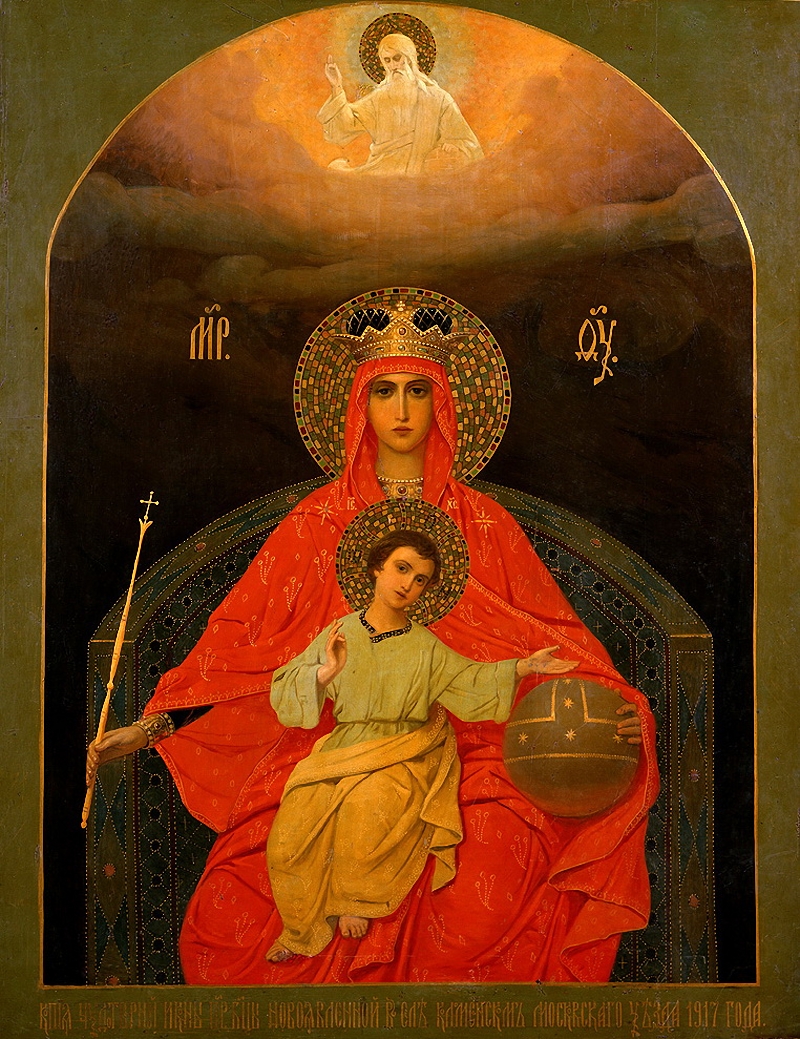
Before Your Sovereign Icon
I stand, embraced by prayerful trembling,
And Your regal face, crowned with a crown,
Attracts my touching gaze.
In a time of unrest and inglorious cowardice,
Treason, lies, unbelief and evil,
You showed us Your Sovereign Image,
You came to us and meekly prophesied:
"I myself took the scepter and orb,
I myself will hand them over again to the King,
I will give the Russian kingdom greatness and glory,
I will feed everyone, console, reconcile."
Repent, Rus, unfortunate harlot...
Wash your defiled shame in tears,
Your Intercessor, Heavenly Queen,
He pities and preserves you and the sinner.
S. Bekhteev
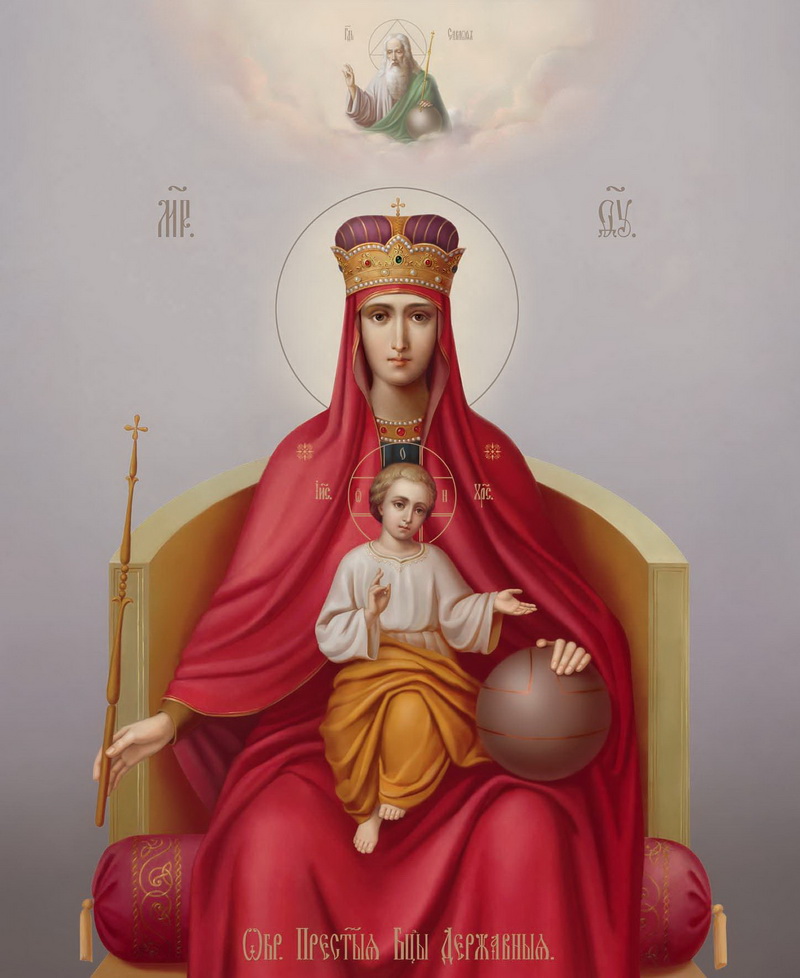
Before the icon of the Most Holy Theotokos "Sovereign" they pray for truth, heartfelt joy, unfeigned love for each other, for peace in the country, for the salvation and preservation of Russia, for the patronage of the throne and the state, for deliverance from foreigners and for the granting of healing bodily and spiritual.
born from January 21 to February 20 guarded by Saints Athanasius and Cyril, and the icons of the Mother of God “Vladimirskaya” and “Burning Bush” will protect them. The "Vladimir" icon of the Mother of God has been revered as miraculous for several centuries. Before her, they prayerfully ask the Mother of God for healing from bodily ailments, in particular, diseases of the heart and cardiovascular system. They turn to her for help during disasters, when they need protection from enemies. In front of the Vladimir Icon of the Mother of God in all ages they prayed for the preservation of Russia. Every home should have this icon, because it reconciles the warring, softens people's hearts, and helps strengthen faith.
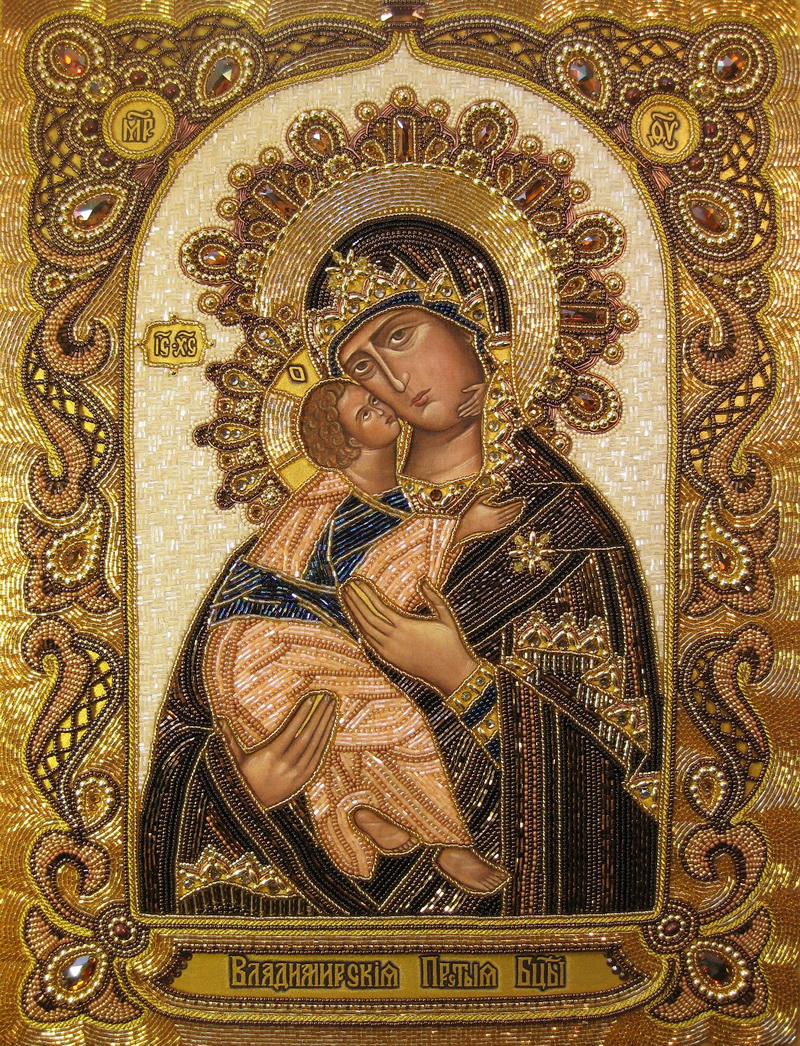
The Vladimir Icon of the Mother of God was painted by the Evangelist Luke on a board from the table at which the Savior ate with the Most Pure Mother and righteous Joseph. The Mother of God, seeing this image, said: "From now on, all generations will bless Me. May the grace of the One born of Me and Mine be with this icon." and was placed in the Maiden's Monastery of Vyshgorod - the ancient specific city of the Holy Equal-to-the-Apostles Grand Duchess Olga.
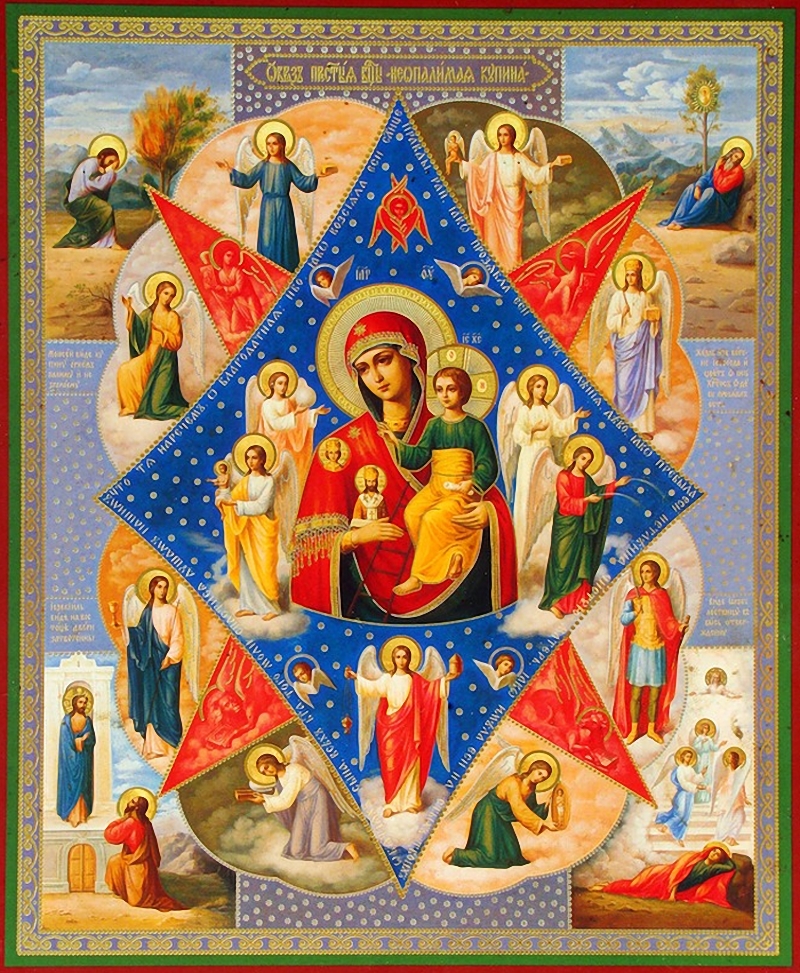
Before the icon of the Most Holy Theotokos "The Burning Bush" they pray for deliverance from fire and lightning, from severe troubles, for the healing of ailments. The icon of the Mother of God "The Burning Bush" is depicted as an octagonal star, consisting of two sharp quadrangles with concave ends. One of them is red, resembling a fire that enveloped the bush seen by Moses; the other is green, indicating the natural color of the bush, which she retained while engulfed in a fiery flame. In the middle of the octagonal star, as if in a bush, is depicted the Blessed Virgin with the Eternal Child. At the corners of the red quadrangle are depicted a man, a lion, a calf and an eagle, symbolizing the four evangelists. In the hands of the Blessed Virgin is a ladder, leaning its upper end against Her shoulder. The ladder means that through the Mother of God the Son of God descended to earth, raising all those who believe in Him to Heaven.
It used to be: a gray-haired church
Burning Bush,
In a white blizzard crouching,
Flashing me out of silence;
In front of a pensive kiot -
Inextinguishable lantern;
And falls with a light flight
Under the light of pink snow.
Neopalimov Lane
A pearl barley blizzard boils;
And Our Lady in the alley
He looks thoughtful with tears.
A. Bely
The icon of the Iberian Mother of God is the intercessor of those who were born with February 21 to March 20. Their guardian angels are Saint Alexis and Milentius of Antioch. The history of the Iberian Icon can be seen from the first century, when, out of inexpressible love for people, the Mother of God blessed the holy apostle and evangelist Luke to paint her image even in the days of Her earthly life. The Monk John of Damascus wrote: “The Holy Apostle and Evangelist Luke, at the time when the Most Holy Mother of God was still living in Jerusalem and dwelling in Zion, painted Her Divine and honest image on a board with pictorial means, so that, as in a mirror, her subsequent generations could contemplate and childbirth. When Luke presented this image to Her, She said: “From now on, all generations will please Me. The grace and power of the One born from Me and Mine be with you.” Tradition attributes the brushes of the holy apostle and evangelist Luke from three to seventy icons of the Mother of God, including the Iberian one.
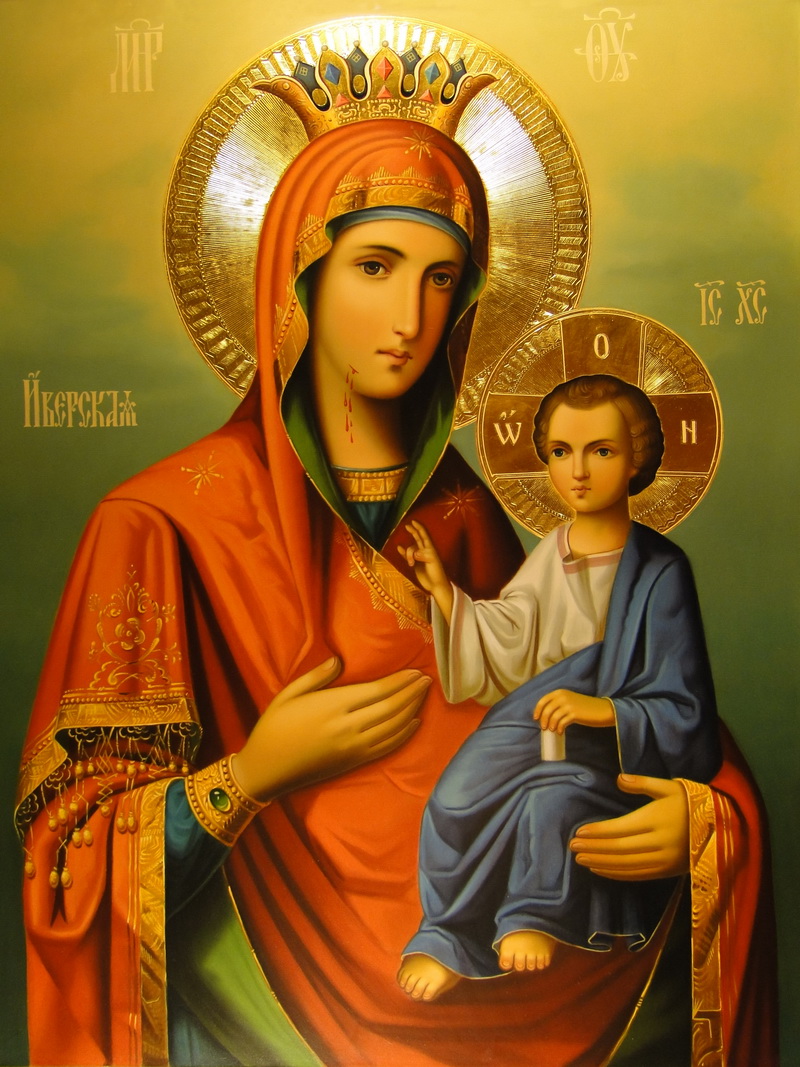
Before the icon of the Most Holy Theotokos "Iberian" they pray for deliverance from various misfortunes and for comfort in troubles, from a fire, for increasing the fertility of the earth, for deliverance from sorrow and sorrow, for the healing of bodily and spiritual ailments, under difficult circumstances, for help to farmers.
born with March 21 to April 20 one must ask for protection from the icon of the Kazan Mother of God, and they are guarded by Saints Sophronius and Innocent of Irkutsk, as well as George the Confessor. We do not know by whom and when the icon of the Russian Mother of God Hodegetria was painted, which in Greek means "Guide". It is to this type of icons that the image of Our Lady of Kazan belongs. The ancient Russian monk-icon painter, inspired by the image of the Byzantine Hodegetria, painted, as it is believed, by the Evangelist Luke during the life of the Virgin, paints his own version of this icon. Its iconography, in comparison with the Byzantine one, is slightly changed. The Russian version can always be recognized by its barely noticeable warmth, softening the regal severity of the Byzantine originals.
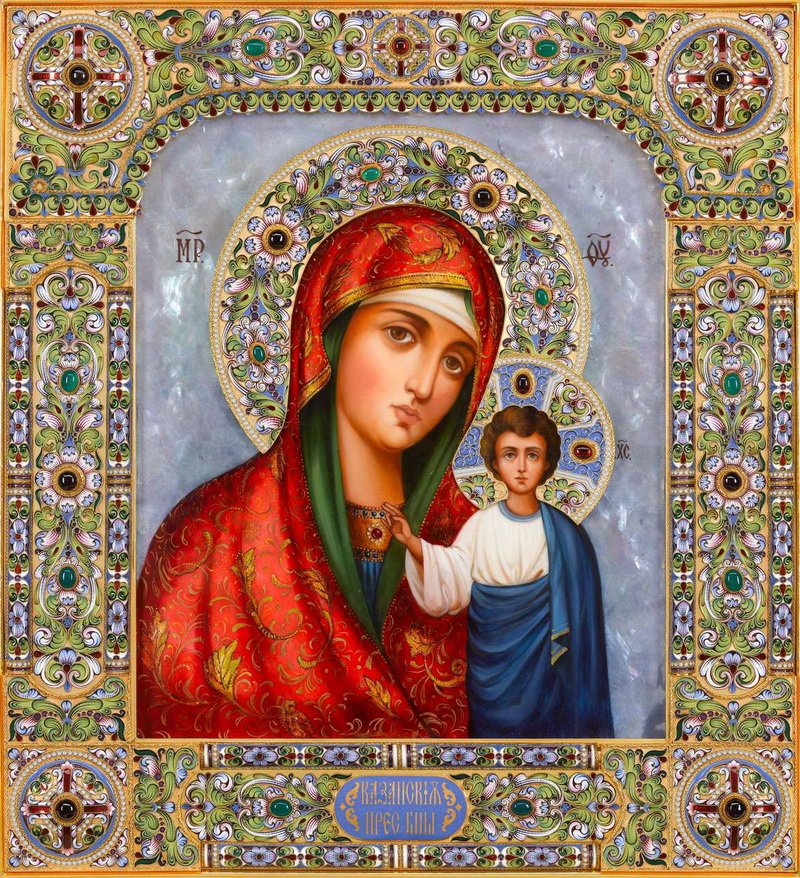
The Kazan Mother of God and her holy, miraculous, saving icon (it restores sight to the blind, gives strength to the weak) are considered practically official intercessors, defenders of Russia from external and internal enemies. Also, the people believe that prayer before the Orthodox icon of the Mother of God protects and frees the praying person from his visible and invisible enemies, i.e. from evil people and from evil spirits ..
The icons "Guide of sinners" and the Iberian Mother of God will protect those born with April 21 to May 20. Saints Stephen and Tamara, the Apostle John the Theologian are their guardian angels. The icon got its name from the inscription preserved on it: "I am the guarantor of sinners to my Son ...". Many miraculous healings occurred from the miraculous image. Guarantor of sinners means Guarantee for sinners before the Lord Jesus Christ. In front of the miraculous image of the Mother of God, the “Guest of Sinners”, they pray for the gift of repentance, in despondency, despair and spiritual sorrow, for the healing of various ailments, for the salvation of sinners.
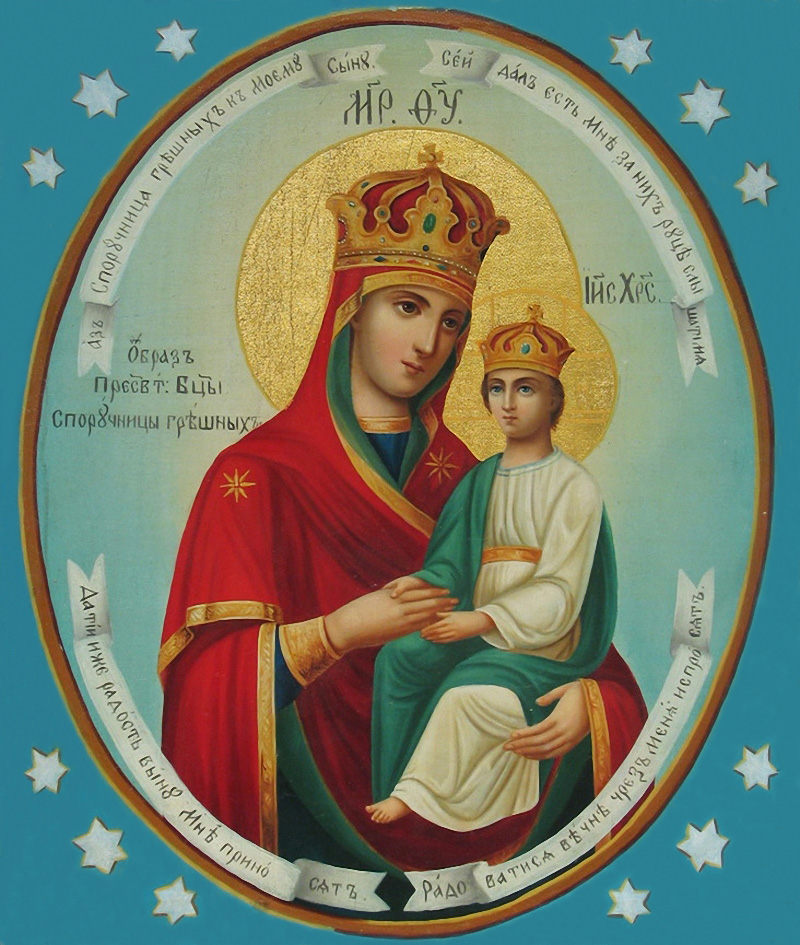
For the first time, this image became famous for miracles in the Nikolaevsky Odrin monastery in the Oryol province in the middle of the last century. The ancient icon of the Mother of God "The guarantor of sinners" did not enjoy proper veneration due to its dilapidation and stood in the old chapel at the monastery gates. But in 1843, it was revealed to many residents in dreams that this icon was endowed, according to God's Providence, with miraculous power. The icon was solemnly transferred to the church. Believers began to flock to her and ask for the healing of their sorrows and illnesses. The first to be healed was a paralyzed boy whose mother fervently prayed in front of this shrine. The icon became especially famous during the cholera epidemic, when many terminally ill people who came to her with faith, she brought back to life.
If the birthday falls between May 21 to June 21, one must ask for protection from the icons of the Mother of God "Search for the Lost", "Burning Bush" and "Vladimir". Guarded by Saints Alexei of Moscow and Constantine. According to legend, the icon of the Mother of God “SEARCH FOR THE DEAD” became famous as early as the 6th century in the Asia Minor city of Adana, delivering the repentant monk Theophilus from eternal death, who later reached the highest spiritual perfection and was glorified by the Church as a saint. The name of the icon arose under the influence of the story “On the repentance of Theophilus, the church steward in the city of Adana” (7th century): praying before the image of the Mother of God, Theophilus called it “Seeking the Lost”.
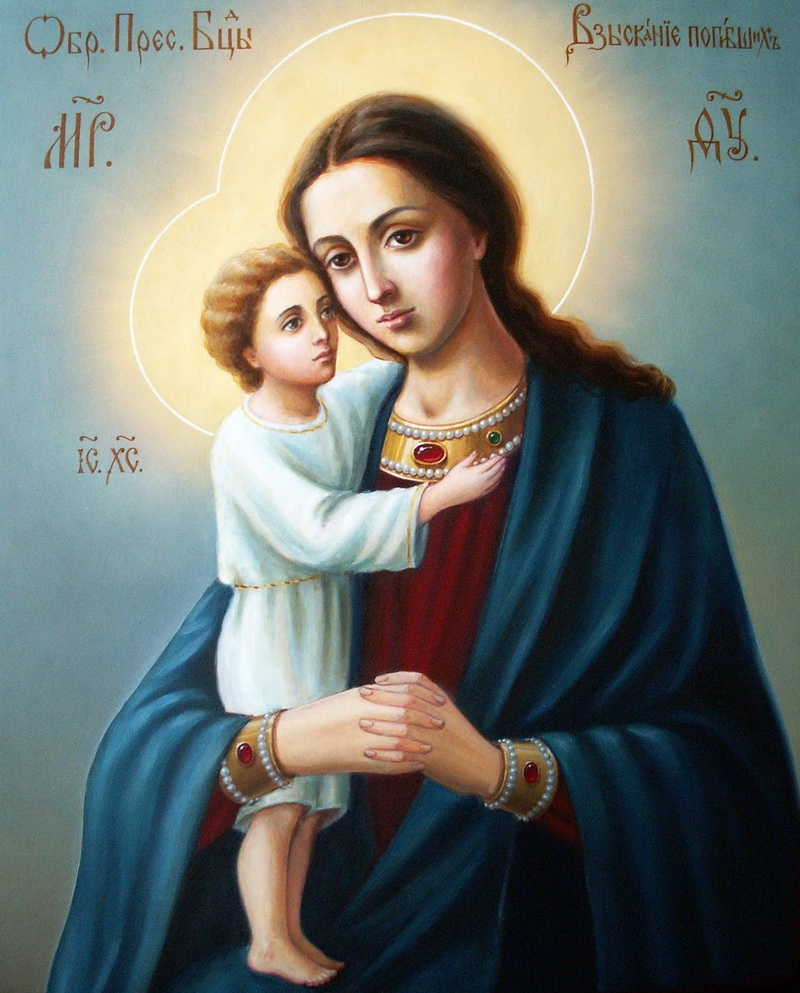
Before the icon of the Most Holy Theotokos "Search for the Lost" they pray for the blessing of marriage; they come to her with a prayer for liberation from vices, mothers come with a petition for perishing children, for the health and well-being of children, for the healing of eye diseases and blindness, for toothache, for fever, for the ailment of drunkenness, for headaches, for admonishing those who have fallen away of the Orthodox faith and the return of the erring to the Church.
Icons of "Joy of All Who Sorrow" and the Kazan Mother of God - intercessor of those born with June 22 to July 22. Saint Cyril is their guardian angel. “Joy of All Who Sorrow” is one of the most popular and widely revered miraculous icons of the Mother of God in Imperial Russia, which has a number of iconographic options that differ significantly from one another. Many sick and grieving, praying to the Mother of God through Her miraculous image, began to receive healing and deliverance from troubles.
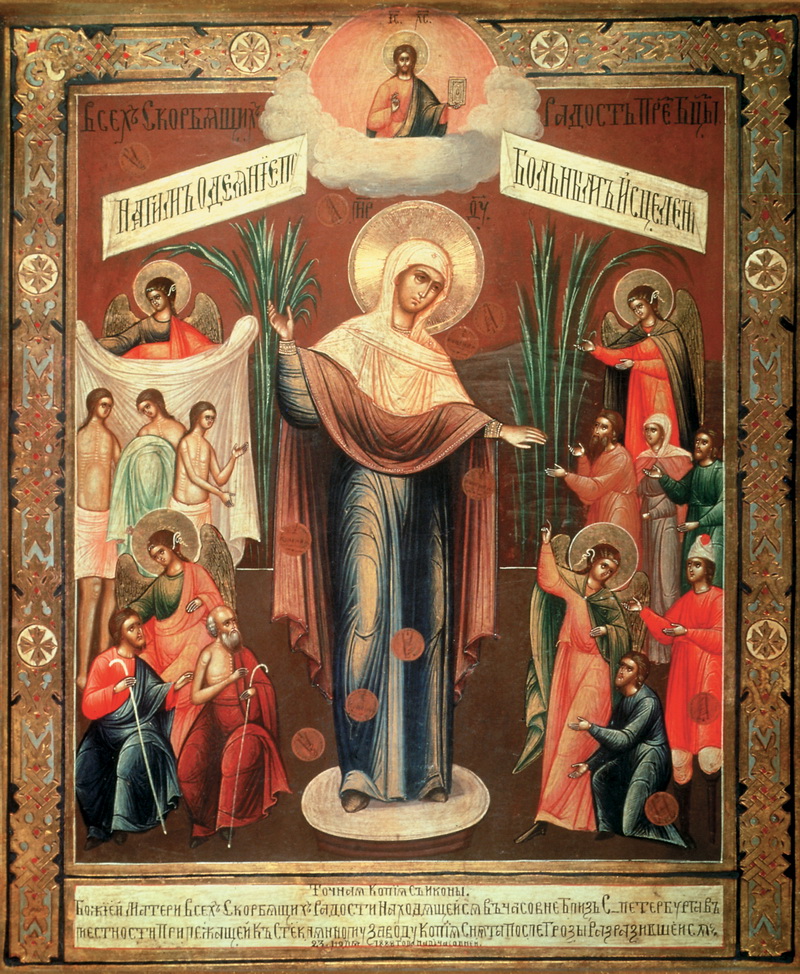
According to custom, the Mother of God is depicted in accordance with the words of the prayer addressed to her. “Helper of the offended, hopeless hope, wretched intercessor, sad consolation, hungry nurse, naked robes, healing of the sick, salvation of sinners, help and intercession for all Christians” - this is how we call the image embodied on the icons “Joy of All Who Sorrow”.
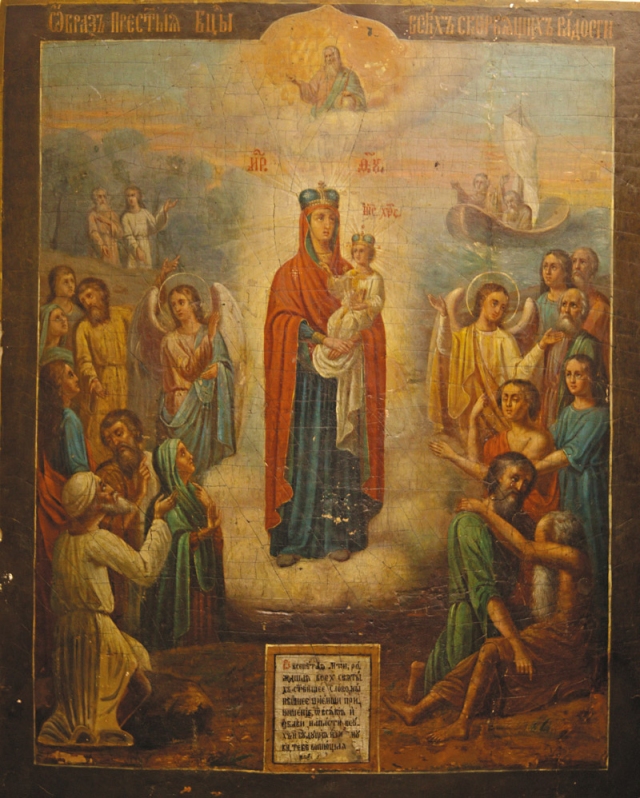
Queen of heaven and earth, consolation of those who mourn,
Heed the prayer of sinners: in You is hope and salvation.
We are mired in the evil of passions, we wander in the darkness of vice,
But... our Motherland... Oh, tilt the all-seeing eye to it.
Holy Russia - your bright house is almost dying,
To You, Intercessor, we call: no one else knows about us.
Oh, do not leave Your children, grieving Hope,
Do not turn Your eyes away from our sorrow and suffering.
Saint Nicholas the Pleasant and Elijah the Prophet protect those born with July 23 to August 23 , and the icon "Protection of the Most Holy Theotokos" protects them. In Orthodox Russia, the word “cover” is understood to mean both cover and patronage. On the feast of the Intercession of the Most Holy Theotokos, Orthodox people ask the Queen of Heaven for protection and help. In Russia, this holiday was established in the XII century by the holy prince Andrei Bogolyubsky. Learning that Saint Andrew, a fool for Christ's sake, saw the Mother of God holding Her cover over the Orthodox, he exclaimed: "Such a great event cannot remain without celebrating him." The holiday was established and immediately accepted by all the people in the joyful conviction that the Mother of God tirelessly keeps Her cover over the Russian land. All his life, Grand Duke Andrei fought against the discord and disunity of his land. He sacredly believed that the cover of the Virgin Mary would protect Russia "from arrows flying in the darkness of our division."
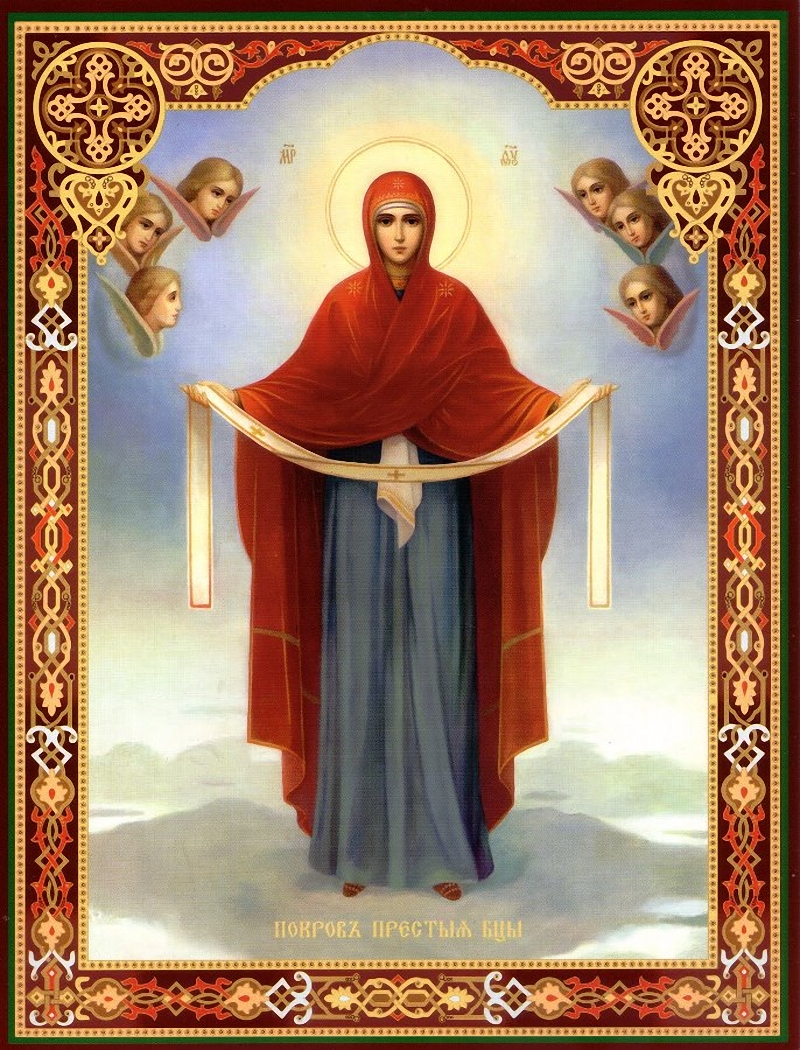
The Intercession of the Most Holy Theotokos is a great Orthodox holiday in memory of the miraculous appearance of the Mother of God in Blachernae Church in 910 during the siege of Constantinople. The Protection of the Most Holy Theotokos is a sign of the grace of God that covers us, strengthens, and preserves us. The icon depicts a procession to heaven through the clouds, to the Savior. The procession is led by the Mother of God, holding a small cover in her arms, and behind Her are a host of saints. The icon symbolizes the prayer of the entire Heavenly Church for the human race.
Those who were born with August 24 to September 23. Their guardian angels are Saints Alexander, John and Paul. The “Passionate” icon of the Most Holy Theotokos got its name because two Angels are depicted near the face of the Mother of God with the instruments of the Passion of the Lord - a cross, a sponge, a copy. The holy image was glorified during the reign of Mikhail Fedorovich.
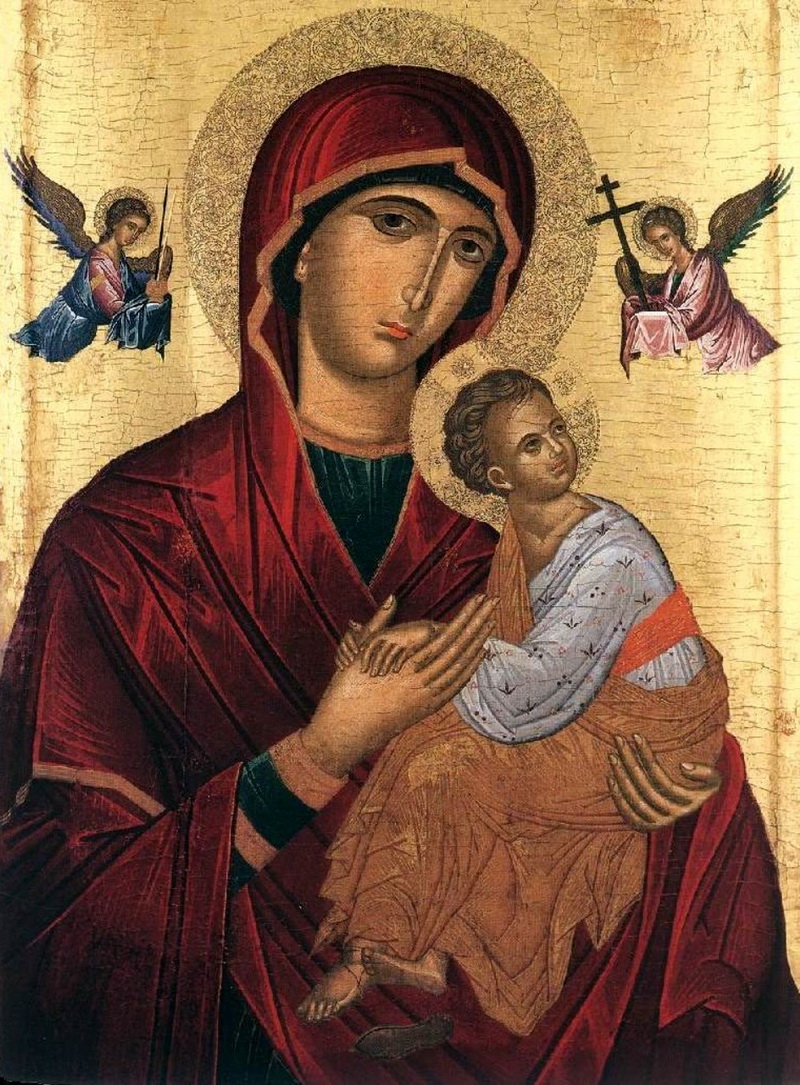
“When you pray before that image with faith, then you and many others will receive healing.”
Those who were born with September 24 to October 23. They are guarded by St. Sergius of Radonezh. The honest and life-giving Cross of the Lord was found in 326 in Jerusalem, not far from the place of the crucifixion of Jesus Christ. In memory of this event, on September 14/27, the Church established a holiday. The tradition of finding the Cross of Christ is closely connected with the life of Saints Equal-to-the-Apostles Helena and Constantine. The Savior showed the life-giving power of His Cross through the revival of the deceased, to whom the Cross was attached. When finding the Cross, in order to enable all those gathered for the celebration to see the shrine, the patriarch erected (raised) the Cross, turning it to all cardinal points.
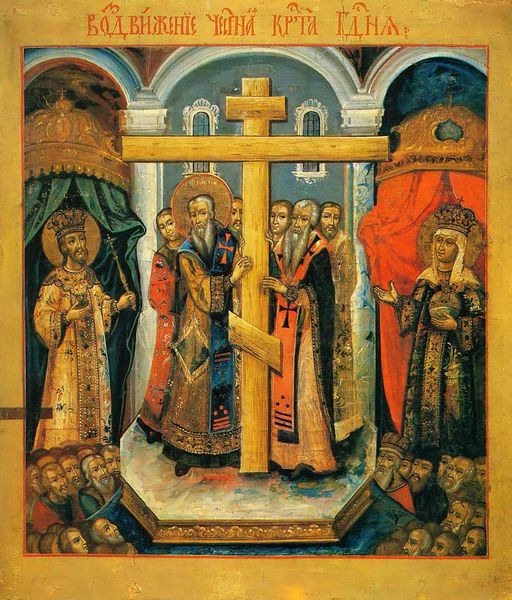
Now for us the cross is a sacred, most important and dearest symbol. More than two billion people on earth (more precisely - 2 billion 100 million - so many Christians on the planet) wear it on their chest as a sign of their involvement in the true God. Two thousand years ago in Palestine, and in many other places, the cross was just an instrument of execution - like the electric chair is now in America. And Mount Golgotha, near the city walls of Jerusalem, was a common place for executions.
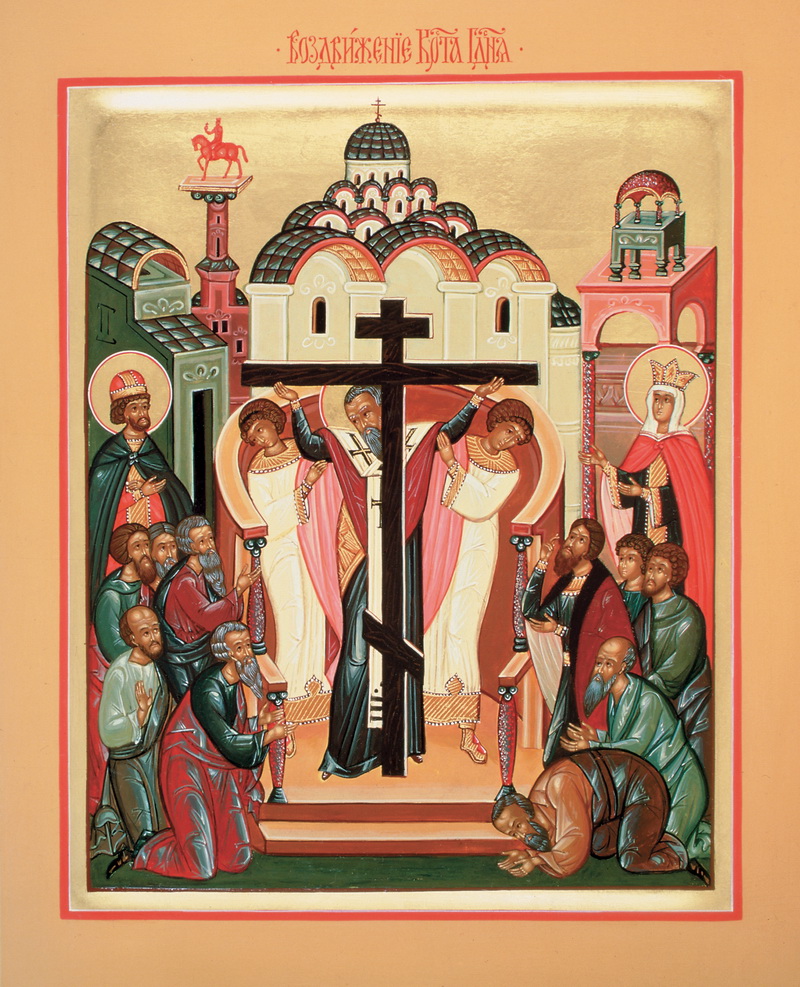
About three hundred years have passed since the death on the cross and the Resurrection of the Lord Jesus Christ. Christianity, despite cruel persecution, spread more and more throughout the earth, attracting both the poor and the rich, the powerful and the weak. The Roman emperor Constantine the Great, his father was a pagan, his mother, Queen Helen, a Christian. After the death of his father, Constantine had a war with the ruler of the city of Rome. On the eve of the decisive battle, when the sun began to set, Constantine and all his army saw a cross in the sky, with the inscription - "Sim you will win." In a dream, at night, Constantine also saw Christ with a cross. The Lord ordered him to make crosses on the banners of his troops and said that he would defeat the enemy. Constantine fulfilled the command of God, and having won the victory and entered Rome, he ordered to put a statue with a cross in his hand on the square of the city. With the accession of Constantine, the persecution of Christians ceased, and the emperor himself was baptized shortly before his death, because he considered himself unworthy to receive this sacrament earlier.
Saint Paul - guardian angel of those born with October 24 to November 22. The icons of the Mother of God "Quick Hearing" and "Jerusalem" protect them. The history of the icon of the Mother of God "Skoroshlushnitsa" has more than a millennium. According to legend, it is a contemporary of the founding of the Athos Dohiarsky monastery and was written in the 10th century with the blessing of the founder of the monastery, the Monk Neophyte. It is believed that the icon is a copy of the revered image of the Mother of God, located in the city of Alexandria. The icon received its name, now known to the entire Orthodox world, later - in the 17th century, when a miracle happened from it. In Russia, they have always enjoyed great love and veneration of the miraculous Athos icon "Quick to Hear", because she became famous for miracles. Cases of healing from epilepsy and demonic possession were especially noted, she shows first aid and consolation to all who flow to Her with faith.
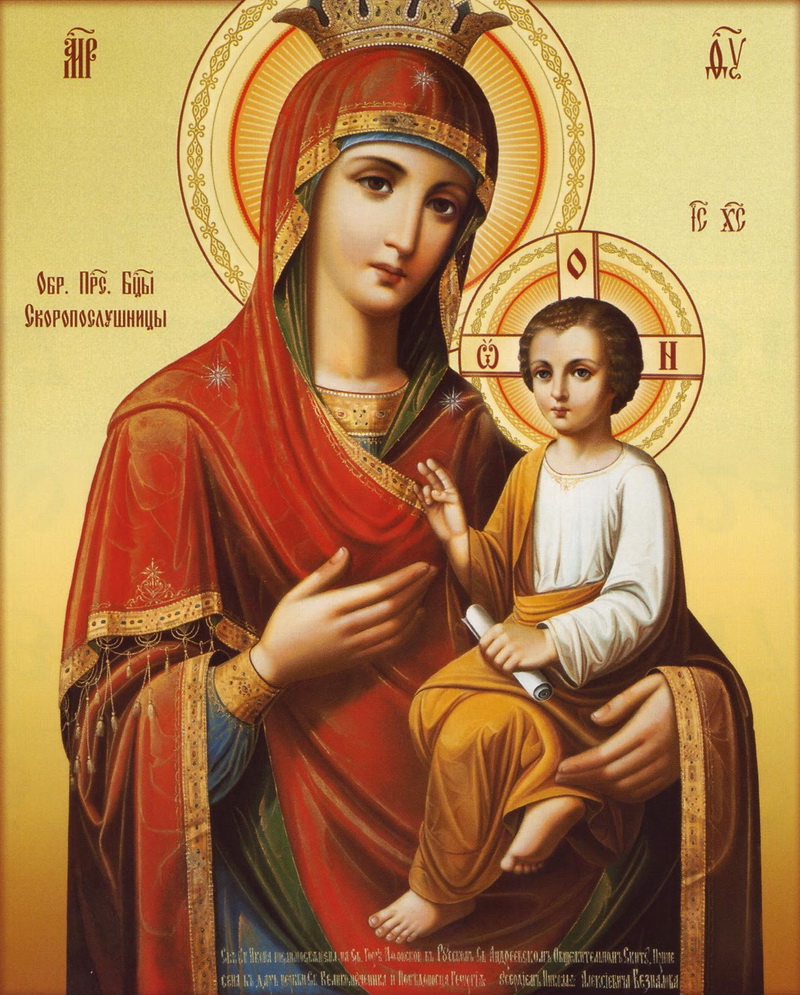
Before this icon, they pray for spiritual insight, for various infirmities, for cancer, for help in childbirth and for feeding with milk, for children. And above all, they pray to the Quick Listener when they don’t know how best to act, what to ask for, in confusion and bewilderment.
According to the pious Tradition of the Church, some of the ancient miraculous images of the Mother of God were painted by the first icon painter, the holy apostle and evangelist Luke, during the earthly life of the Ever-Virgin. Among them are Vladimir, Smolensk and other icons. It is believed that the image of the Jerusalem icon was also painted by the Apostle Luke, and this happened in the Holy Land, in Gethsemane, in the fifteenth year after the ascension of the Savior to heaven. In 453, the image was transferred from Jerusalem to Constantinople by the Greek king Leo the Great. In 988, Tsar Leo VI presented the icon as a gift to Grand Duke Vladimir when he was baptized in the city of Korsun (present-day Kherson). Saint Vladimir gave the Jerusalem Icon of the Mother of God to the Novgorodians, but in 1571 Tsar Ivan the Terrible transferred it to Moscow to the Assumption Cathedral. During the invasion of Napoleon in 1812, this icon of the Mother of God was stolen and taken to France, where it remains to this day.
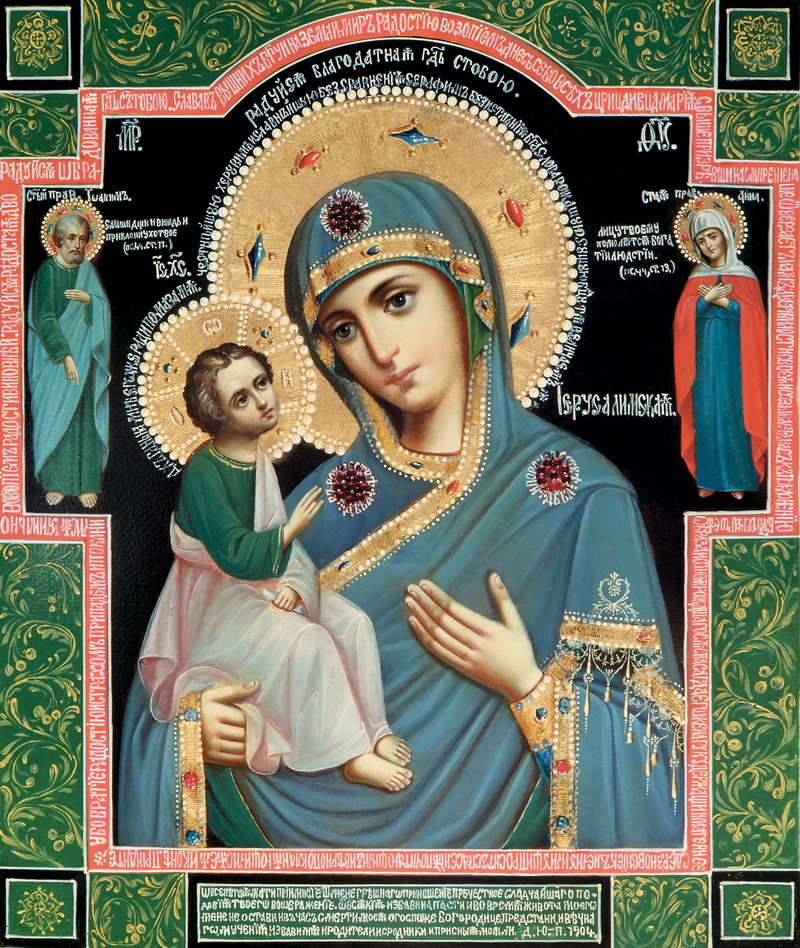
Before the icon of the Most Holy Theotokos of Jerusalem, they pray in sorrow, sorrow and despondency, for healing from blindness, eye diseases and paralysis, during a cholera epidemic, for deliverance from the loss of livestock, from a fire, during relaxation, and also during an attack by enemies.
born with November 23 to December 21 should ask for intercession from the icons of the Mother of God "Tikhvin" and "Sign". Saint Nicholas the Pleasant and Saint Barbara are their guardian angels. The Tikhvin Icon of the Mother of God is considered the patroness of babies, she is called a child. She helps children in illnesses, calms the restless and disobedient, helps them in choosing friends, protects them from the bad influence of the street. It is believed to strengthen the bond between parents and children. It helps women during childbirth and during pregnancy. Also, the Mother of God in front of Her icon "Tikhvinskaya" is addressed with a prayer when there are problems of conception.
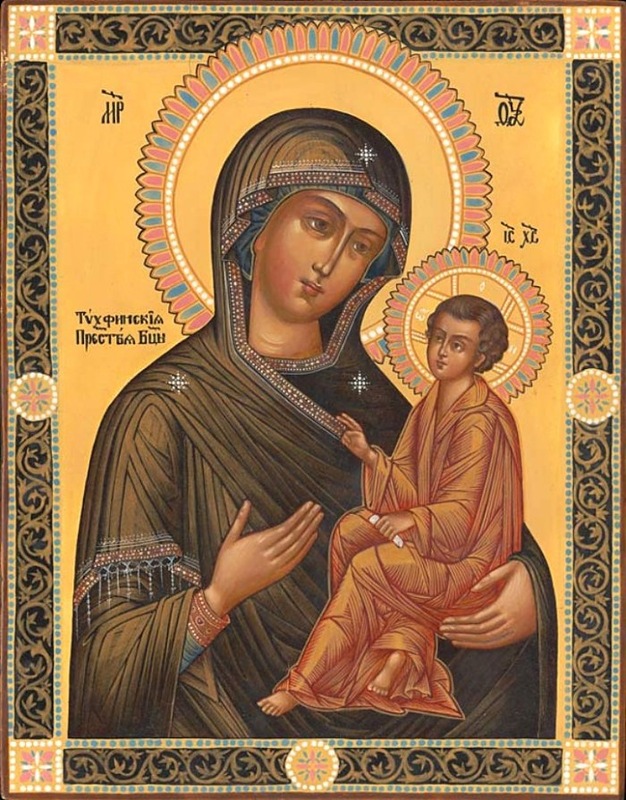
One of the most revered shrines in Russia. It is believed that this image was created by the holy Evangelist Luke during the life of the Most Holy Theotokos. Until the XIV century, the icon was in Constantinople, until in 1383 it suddenly disappeared from the Blachernae Church. According to the chronicle, in the same year in Russia, the icon appeared to the fishermen on Lake Ladoga near the city of Tikhvin. The miraculous Tikhvin Icon from the Tikhvin Monastery is currently kept in Chicago in the USA.
The Icon of the Mother of God "The Sign" became famous in the XII century, at a time when the Russian land was groaning from civil strife. Vladimir-Suzdal Prince Andrei Bogolyubsky, in alliance with the princes of Smolensk, Polotsk, Ryazan, Murom and others (72 princes in total), sent his son Mstislav to conquer Veliky Novgorod. In the winter of 1170, a huge militia laid siege to Novgorod, demanding its surrender. After fruitless negotiations, the Novgorodians refused to surrender, and the battle began. The defenders of Novgorod, seeing the terrible strength of the enemy and exhausted in an unequal struggle, placed all their hope on the Lord and the Most Holy Theotokos, as they felt the truth on their side.
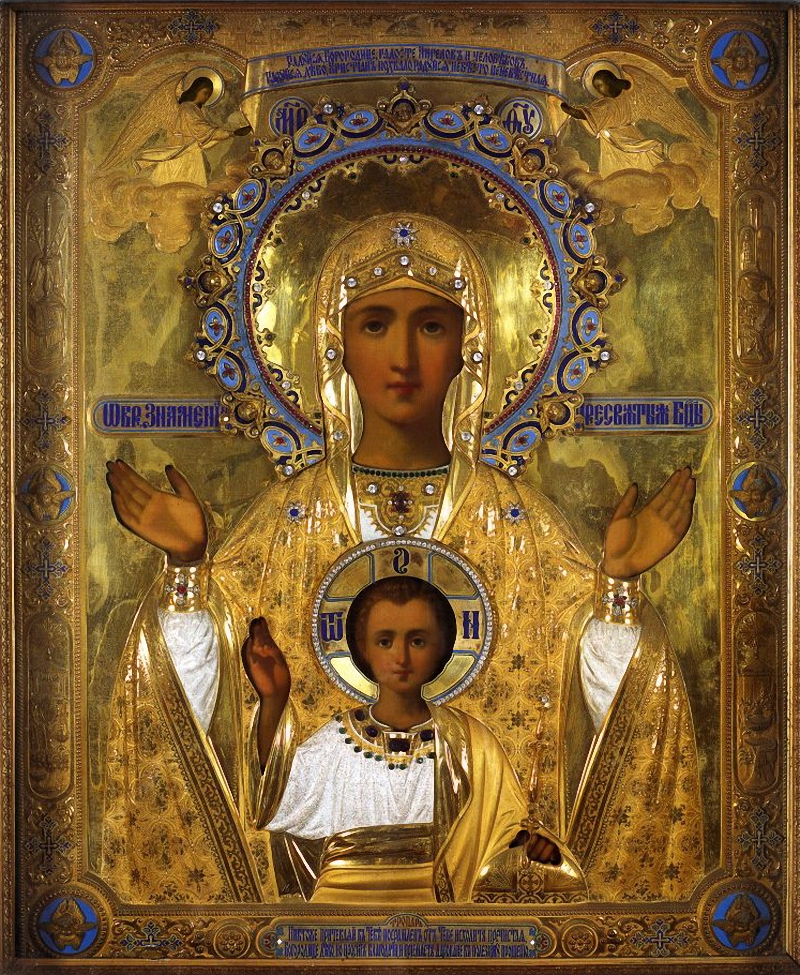
Before the icon of the Most Holy Theotokos "The Sign" of Novgorod, they pray for the cessation of disasters, for protection from attacks by enemies, from fires, for protection from thieves and criminals and for the return of the lost, for deliverance from the plague, for the pacification of the warring and deliverance from internecine strife ..
In every house it is desirable to have the Iberian Icon of the Most Holy Theotokos (Goalkeeper), which protects the house from enemies and ill-wishers. The Iberian icon of the Most Holy Theotokos is one of the most famous and revered in the Orthodox world. According to legend, Iverskaya was written by the Evangelist Luke, for a long time was in Asia Minor Nicaea, and from the beginning of the 11th century. permanently resides in the Iberian Monastery on Mount Athos (in honor of which it got its name).
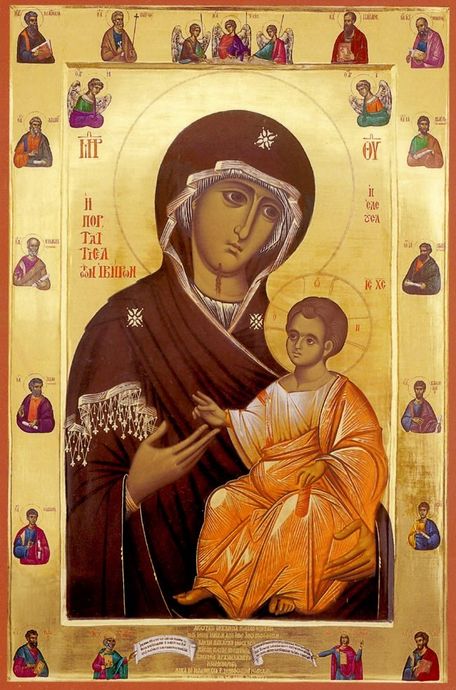
Not far from the Iberian monastery on the seashore, a miraculous spring has been preserved to this day, which gushed at the moment when the Mother of God set foot on Athos land; this place is called Clement's Quay. And it was to this place miraculously, in a pillar of fire, that the Iberian Icon of the Mother of God, now known to the whole world, appeared by sea. The veneration of this image is evidenced by the fact that the Monk Nikodim the Holy Mountain alone wrote four canons to the Iberian Icon of the Mother of God.
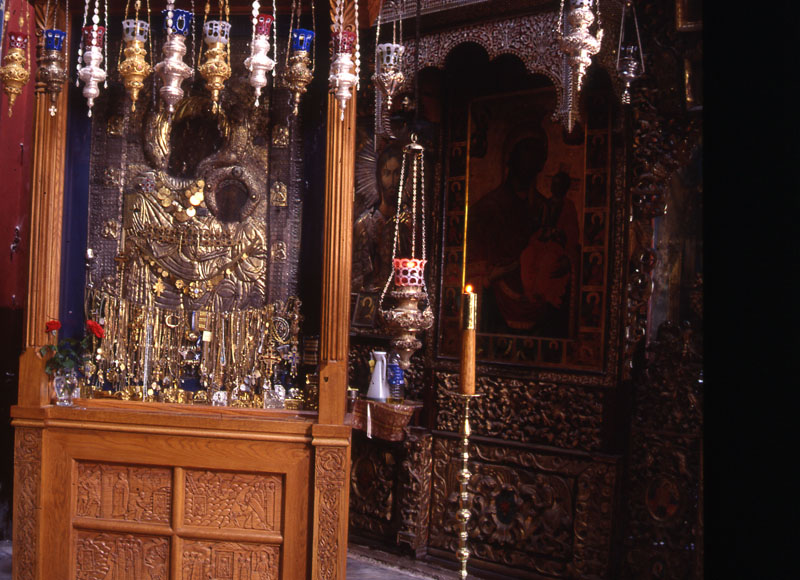
Here is what the famous Russian pilgrim-pedestrian of the 18th century Vasily Grigorovich-Barsky writes about the "Goalkeeper": i.e., the Goalkeeper, very terribly transparent, with great hair, holding Christ the Savior on her left hand, blackened on her face for many years for the sake of years, both completely revealing the image, covered all but the face with silver-plated gilded clothes, and besides, it is dotted with precious stones and gold coins, from various tsars, princes and noble boyars bestowed for many of her miracles, even Russian tsars, queens and princesses, emperors and empresses, princes and princesses, I saw gold coins and other gifts hung with my own eyes.
A family icon is an icon depicting the namesake saints of all family members. A family icon is a shrine that connects all family members, unites their spirit. The family icon is part of the family heritage, which is passed down from generation to generation. The presence of a family icon in the house unites the family, strengthens their faith, and helps in various family matters. The spiritual power of such an icon lies in its catholicity, offering up their prayers, each member of the family prays not only for himself, but also for his parents, children and loved ones.
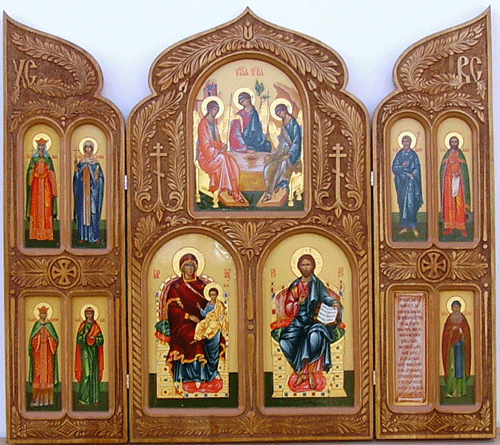
Recently, the tradition of the family icon has been revived everywhere. On the family icon, the patron saints of family members are depicted all together. Here, as if out of time, saints gather who pray for this family, for this family. Among them may be the patron saints of the parents who have already passed away - the founders of the family. To write such an image, they select each saint by name, and rare saints are also found.
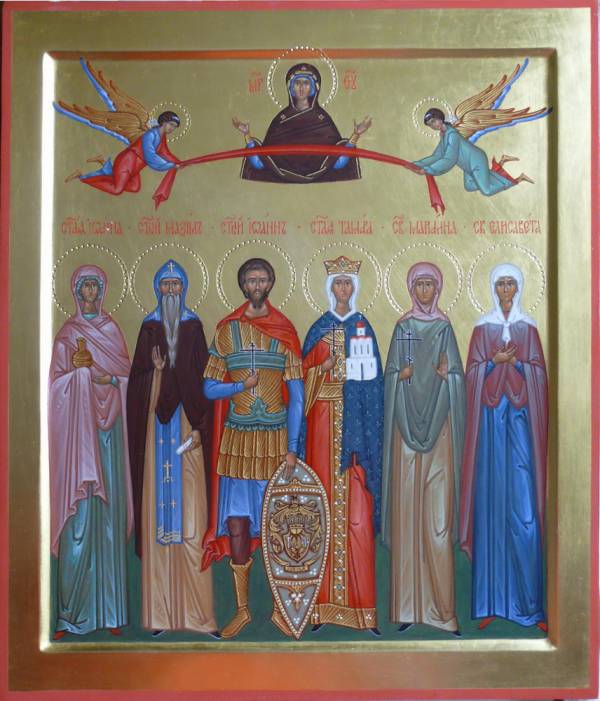
Faith is faith that does not need proof. Nevertheless, over the past two thousand years, so much evidence has been collected for each episode of the gospel story that only ... a not very informed person can doubt that all this actually happened.
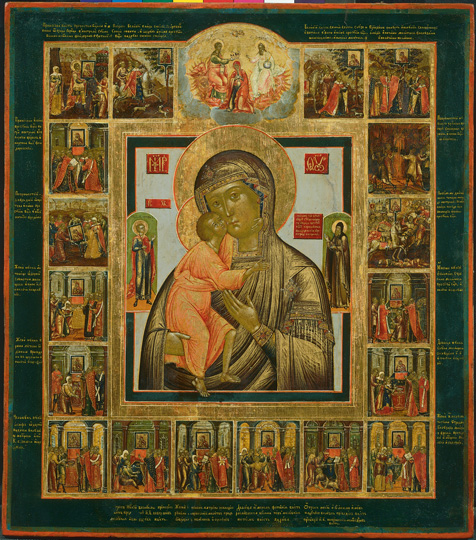
The performance of a miracle, that is, the fulfillment of a prayer, first of all, depends on the faith of the one who prays.
If one who pronounces a prayer with his mouth does not have a conscious and heartfelt appeal to God, then even in front of the most miraculous icon, prayer will remain fruitless ...










